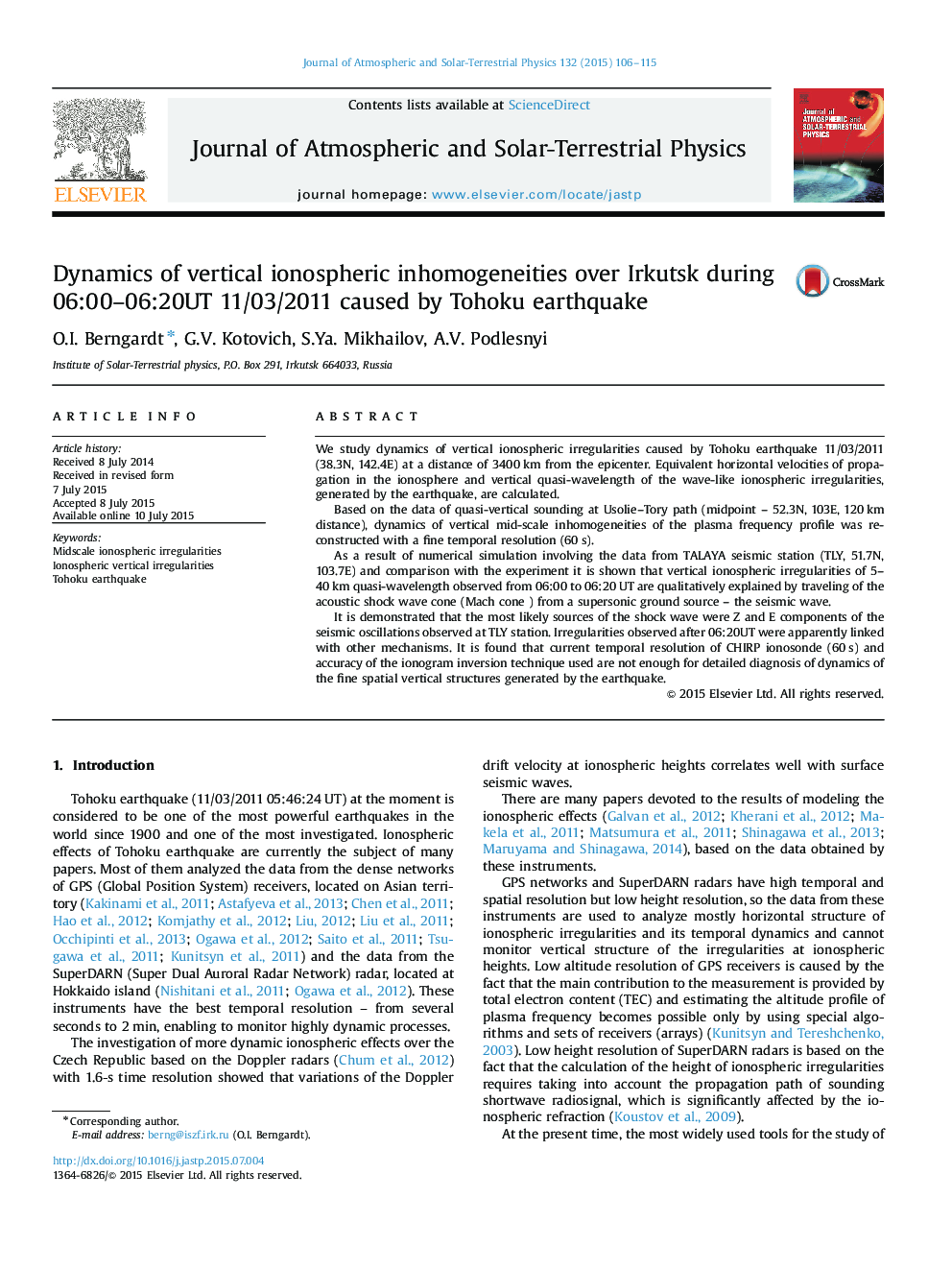| Article ID | Journal | Published Year | Pages | File Type |
|---|---|---|---|---|
| 1776385 | Journal of Atmospheric and Solar-Terrestrial Physics | 2015 | 10 Pages |
•Irkutsk CHIRP ionosonde data during Tohoku earthquake (March 11, 2011) are presented.•Dynamics of 5–40 km vertical ionospheric irregularities was investigated.•It is shown that their source is Mach cone from Z and/or E component of seismic waves.•It is shown that 60 s resolution is not enough to study irregularity dynamics.
We study dynamics of vertical ionospheric irregularities caused by Tohoku earthquake 11/03/2011 (38.3N, 142.4E) at a distance of 3400 km from the epicenter. Equivalent horizontal velocities of propagation in the ionosphere and vertical quasi-wavelength of the wave-like ionospheric irregularities, generated by the earthquake, are calculated.Based on the data of quasi-vertical sounding at Usolie–Tory path (midpoint – 52.3N, 103E, 120 km distance), dynamics of vertical mid-scale inhomogeneities of the plasma frequency profile was reconstructed with a fine temporal resolution (60 s).As a result of numerical simulation involving the data from TALAYA seismic station (TLY, 51.7N, 103.7E) and comparison with the experiment it is shown that vertical ionospheric irregularities of 5–40 km quasi-wavelength observed from 06:00 to 06:20 UT are qualitatively explained by traveling of the acoustic shock wave cone (Mach cone ) from a supersonic ground source – the seismic wave.It is demonstrated that the most likely sources of the shock wave were Z and E components of the seismic oscillations observed at TLY station. Irregularities observed after 06:20UT were apparently linked with other mechanisms. It is found that current temporal resolution of CHIRP ionosonde (60 s) and accuracy of the ionogram inversion technique used are not enough for detailed diagnosis of dynamics of the fine spatial vertical structures generated by the earthquake.
